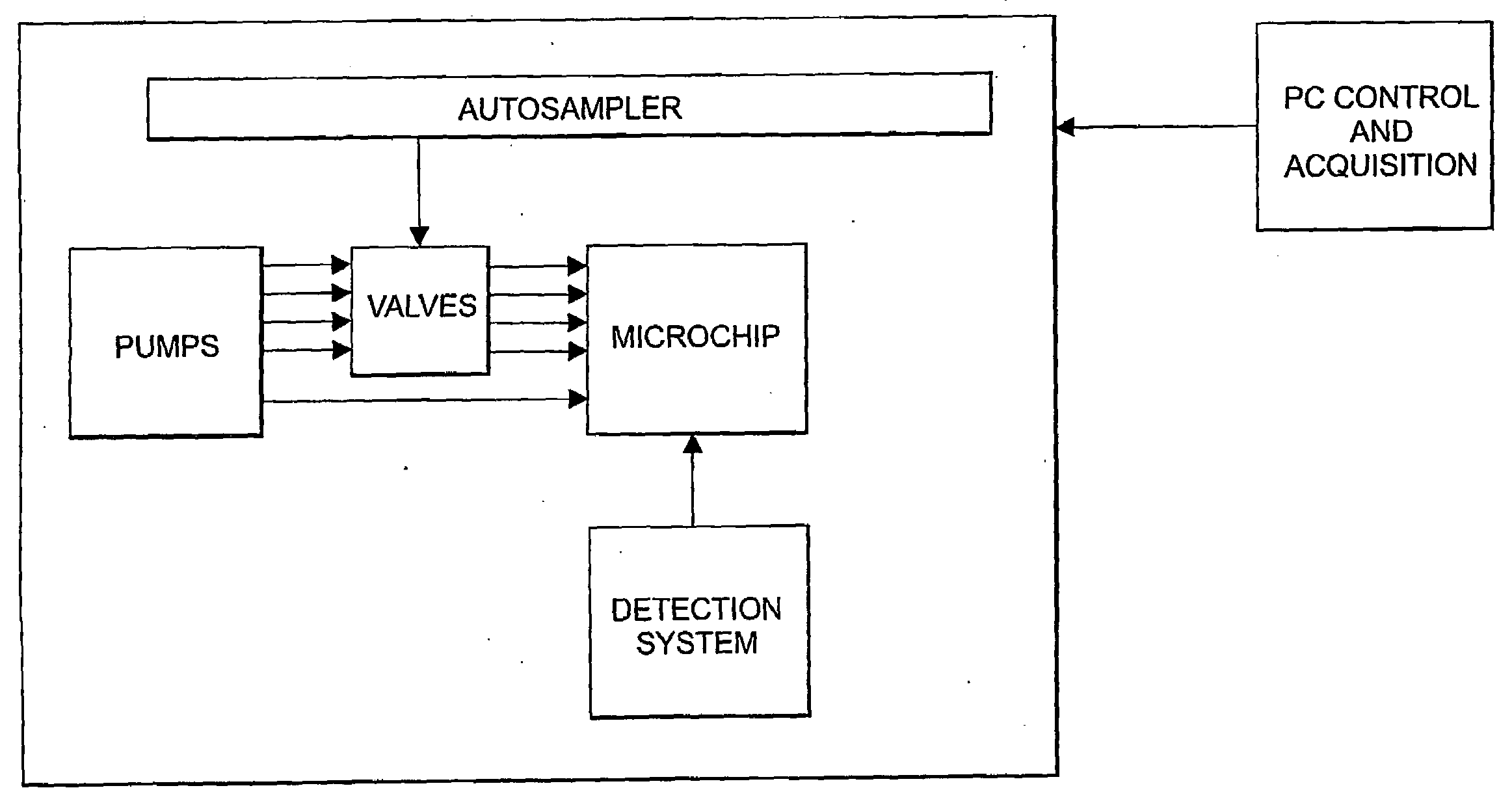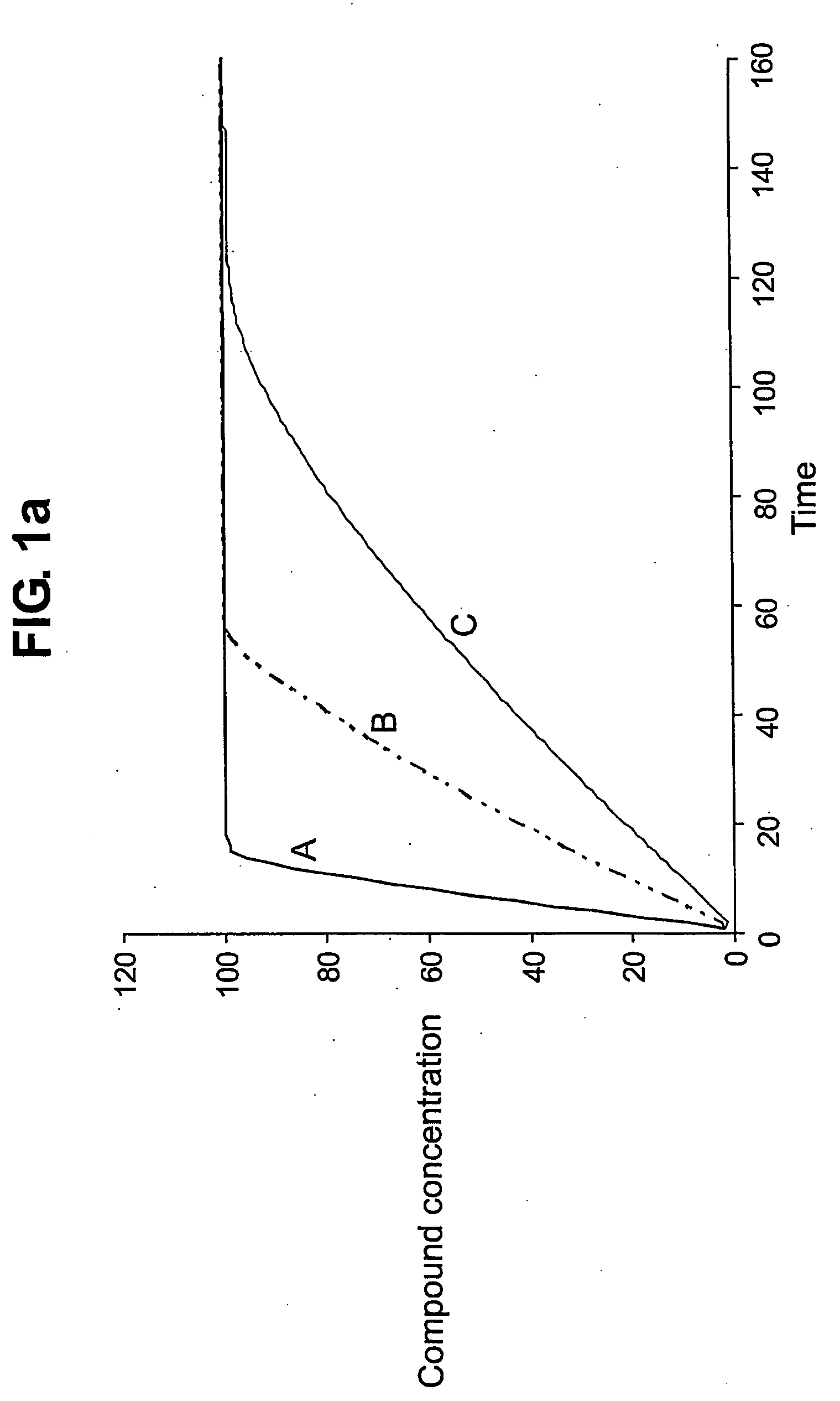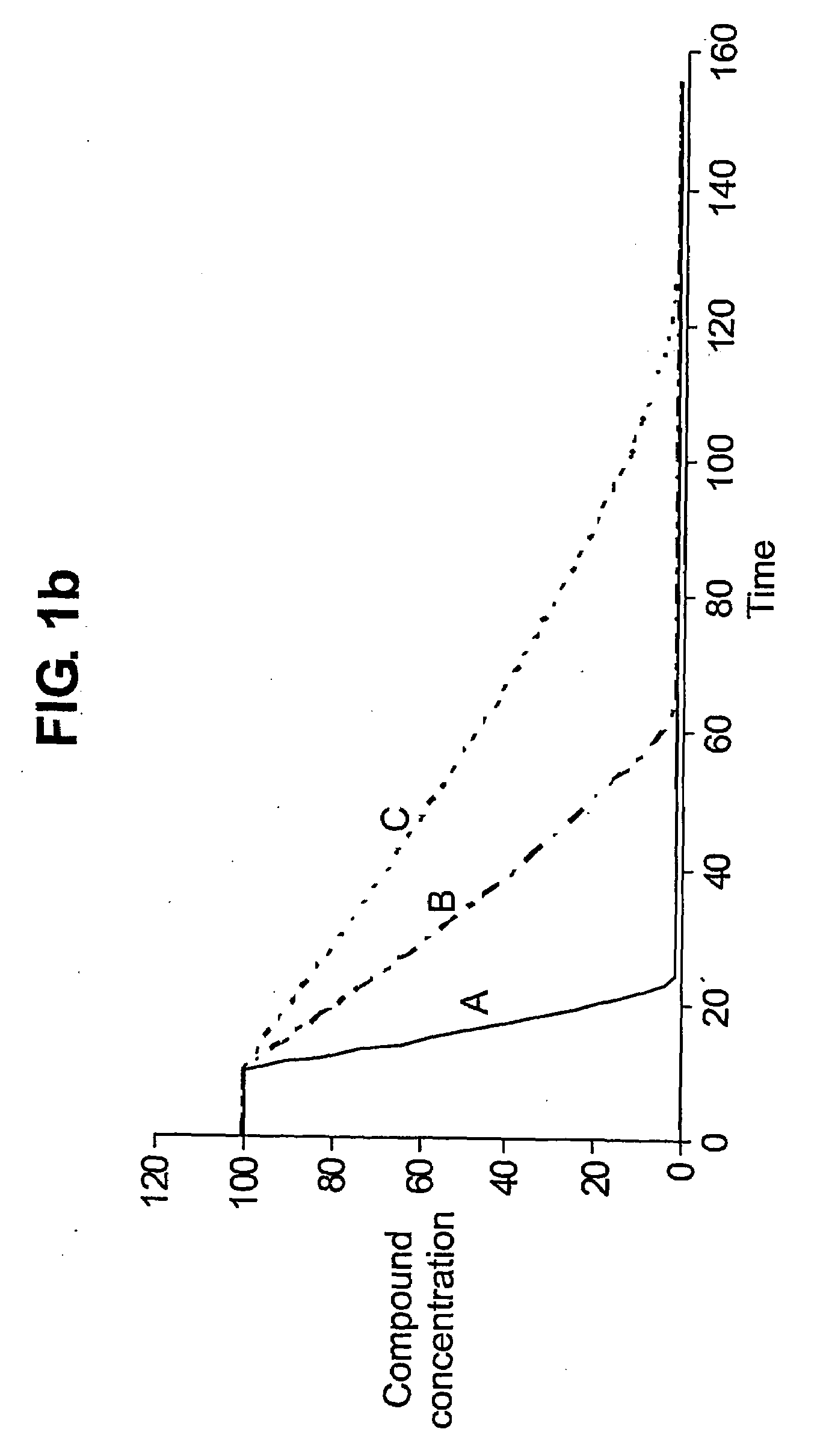Microfluidic system and methods
- Summary
- Abstract
- Description
- Claims
- Application Information
AI Technical Summary
Benefits of technology
Problems solved by technology
Method used
Image
Examples
example
Coating Of The Glass Microchannel Surface
[0137]For dervatization of the internal surface of the glass microchannels, glass microchannels (Micronit microfluidics bv) were coupled up to syringes (volume 100 uL, model 81075, Hamilton company) via polyimide-coated fused silica capillaries (Polymicro Technologies) with outer diameter of 375 urn and internal diameter of 100 um. Capillaries were connected to the syringe needle via an in-line, Microtight (Registered Trade Mark) capillary connector (Upchurch scientific) and were connected to the glass microchannel chip via a bespoke connector block (FIG. 11) using Nanoport (Registered Trade Mark) connector adaptors (Upchurch Scientific). Fluid was pumped using stepper motor-based syringe pumps (model 33, Harvard Apparatus Company).
[0138]In one embodiment, the internal surface of glass microchannels (Micronit Microfluidics bv), which had internal dimensions of 20 um depth and 50 um, 70 um and 120 um width, were derivatized with 1H, 1H, 2H, 2H...
PUM
 Login to View More
Login to View More Abstract
Description
Claims
Application Information
 Login to View More
Login to View More - R&D
- Intellectual Property
- Life Sciences
- Materials
- Tech Scout
- Unparalleled Data Quality
- Higher Quality Content
- 60% Fewer Hallucinations
Browse by: Latest US Patents, China's latest patents, Technical Efficacy Thesaurus, Application Domain, Technology Topic, Popular Technical Reports.
© 2025 PatSnap. All rights reserved.Legal|Privacy policy|Modern Slavery Act Transparency Statement|Sitemap|About US| Contact US: help@patsnap.com



